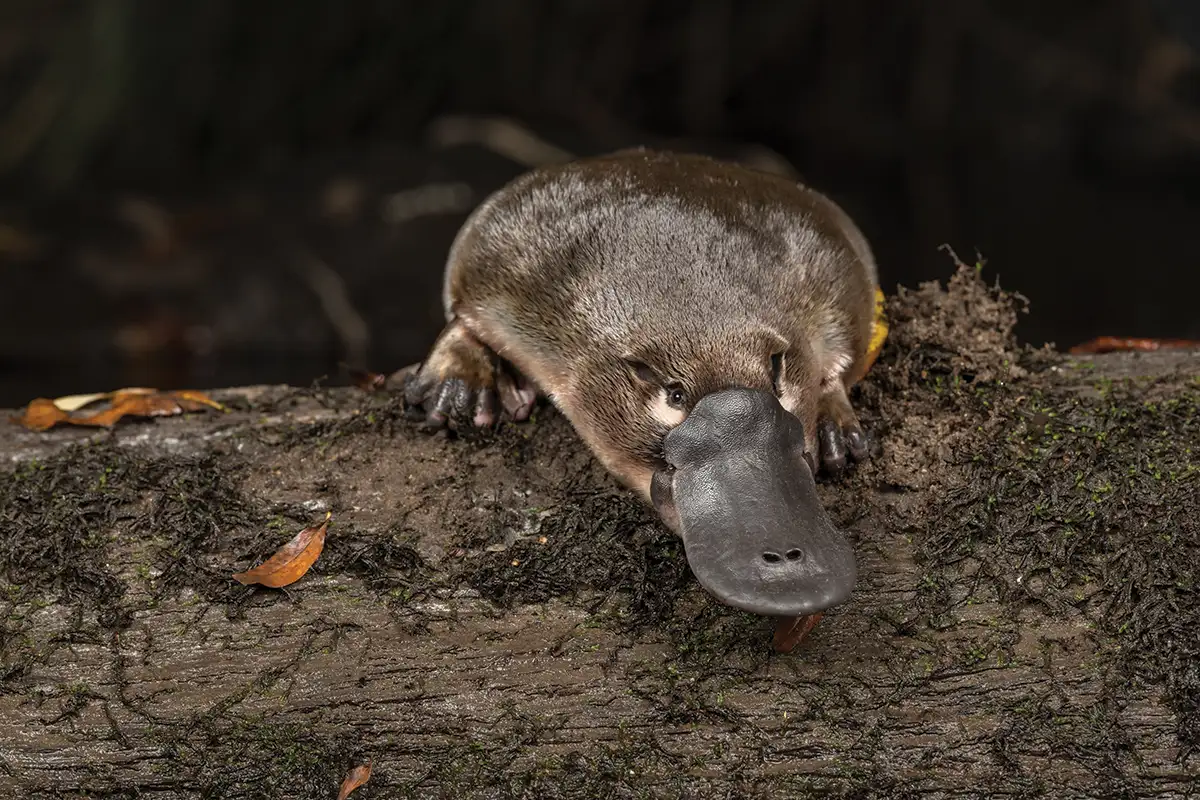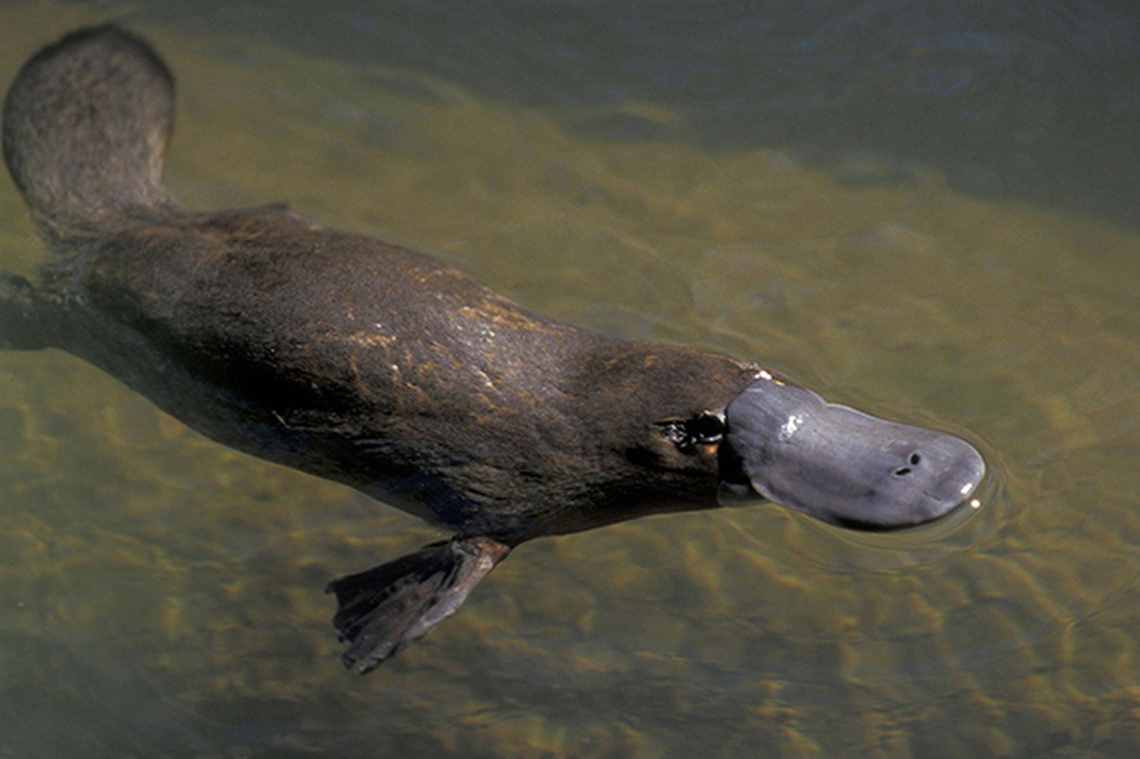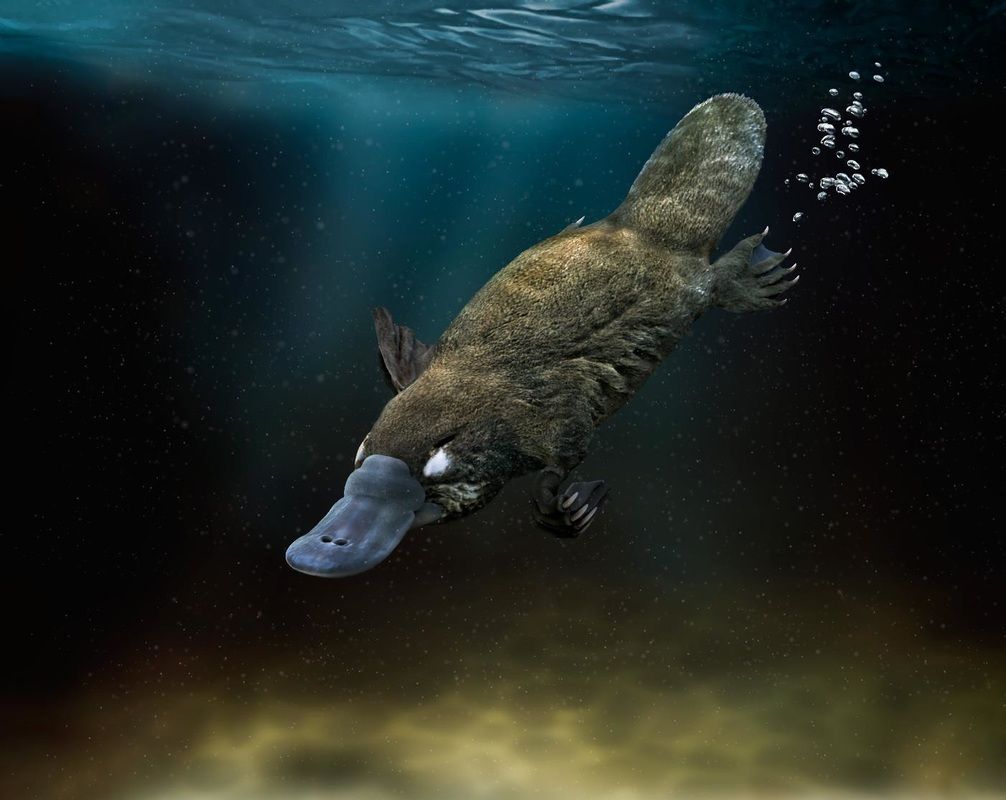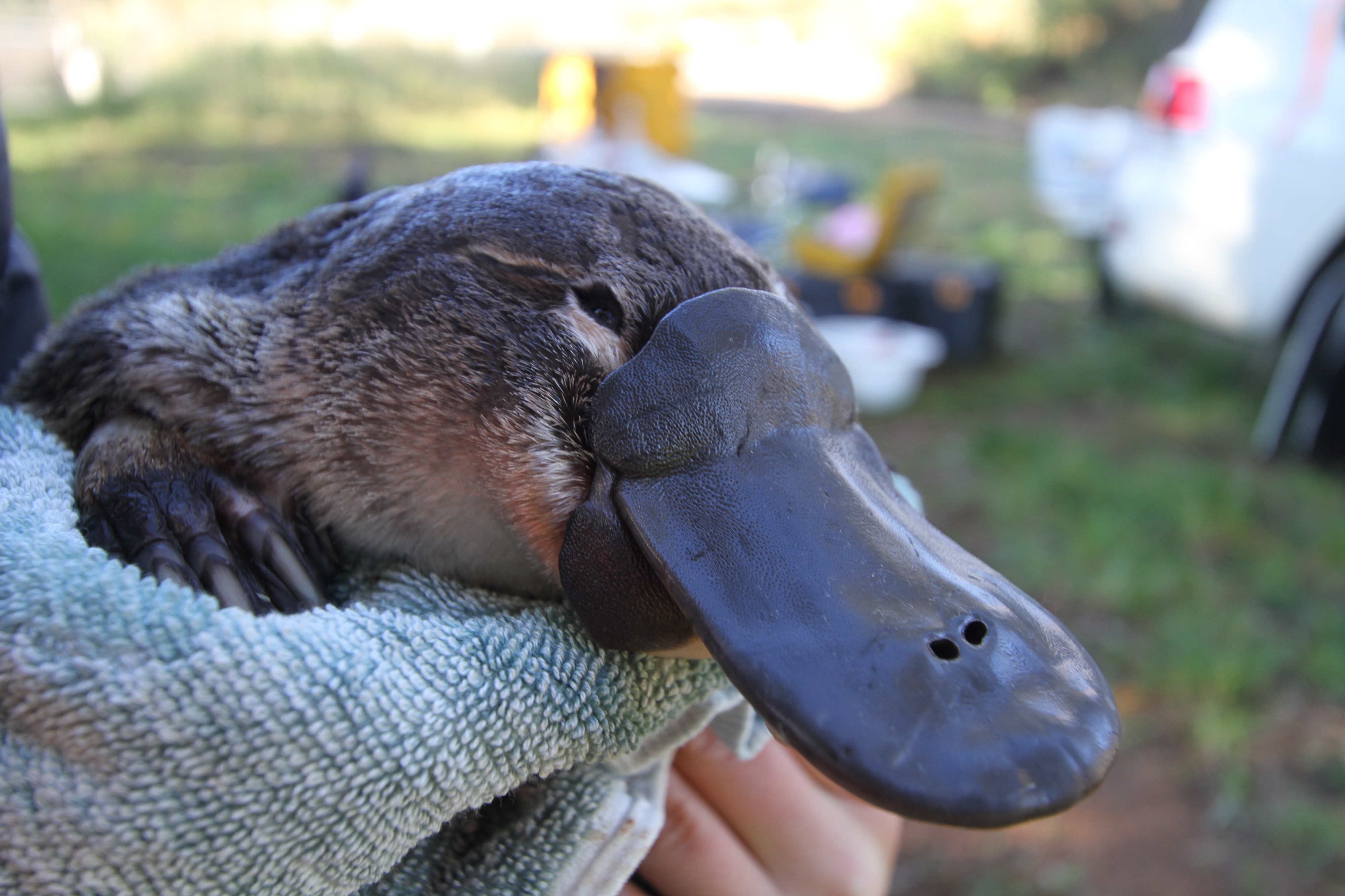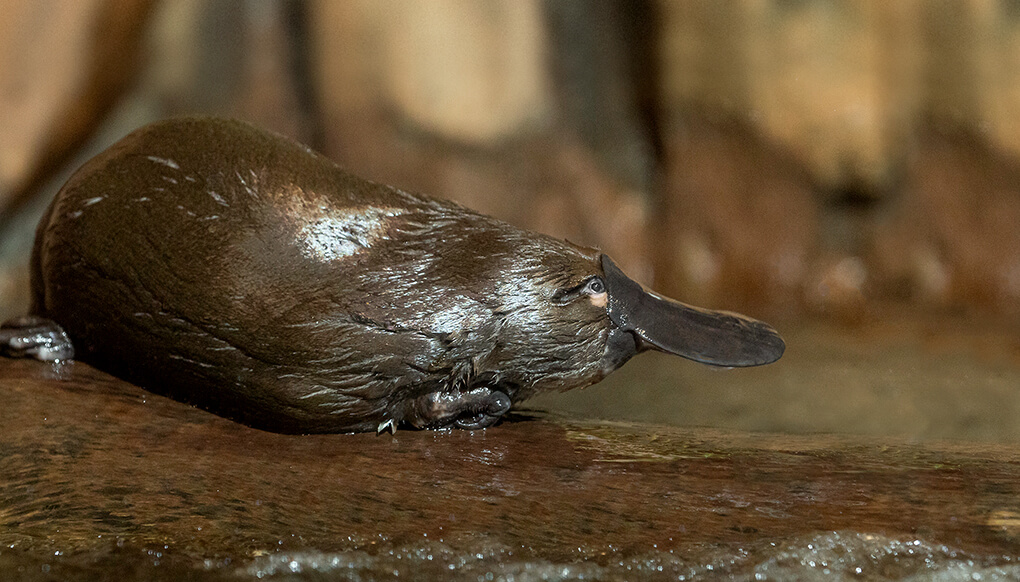Filling the bill
A platypus is the only mammal with a bill. The dark gray skin on the bill is hairless and moist. Grooves along the sides of a platypus's bill help it filter food from the water. A platypus grinds its food with tough pads in its bill; it has no teeth. A platypus spends 10 to 12 hours each day looking for food underwater.
Venomous males
Adult male platypuses have a venom gland in each thigh. The venom gland is connected to a small spur on its hind leg-think of a platypus's spur as a tiny horn, about as long as your fingernail. Only males platypuses produce venom, and only during breeding season. As they fight for a chance to mate with a female, both males try to drive their sharp spurs into each other. The venom doesn't kill a rival; it just slows him down for a while.
Night and day
Platypuses are active at night, when they are busy finding food in the water. During the daytime, a platypus hides in its burrow in an earthen stream bank. Inside a platypus burrow, tunnels lead to oval-shaped chambers.

